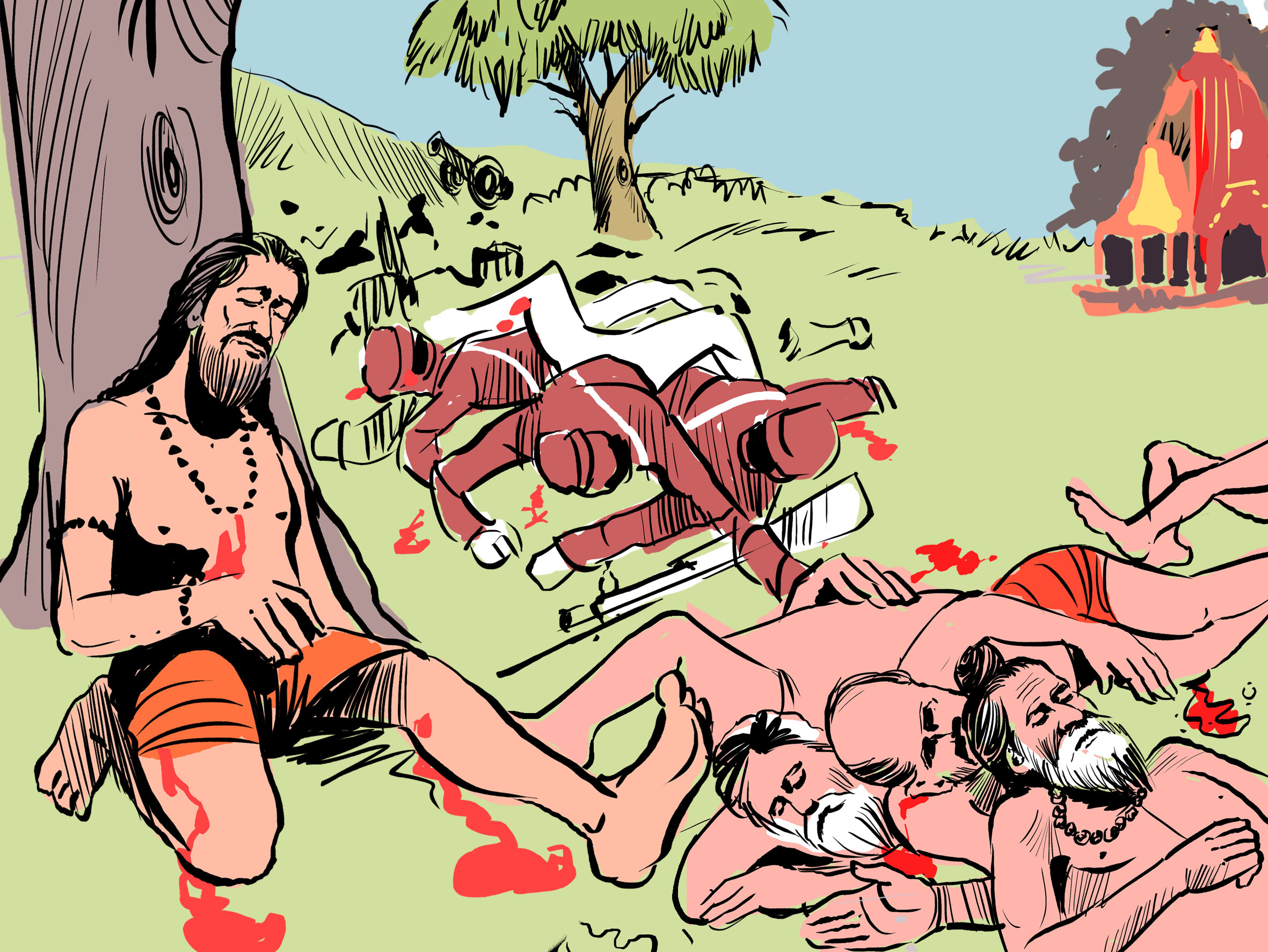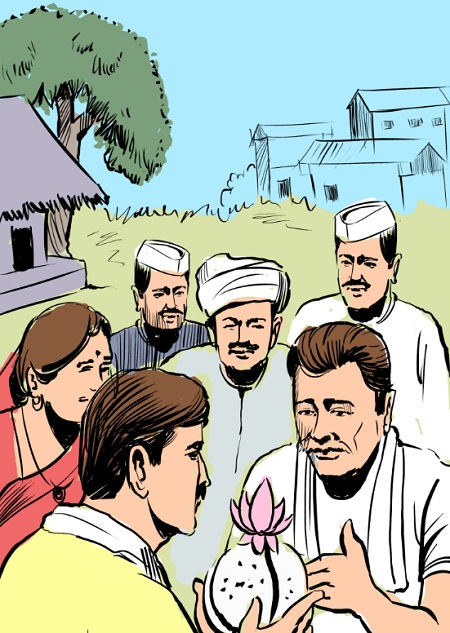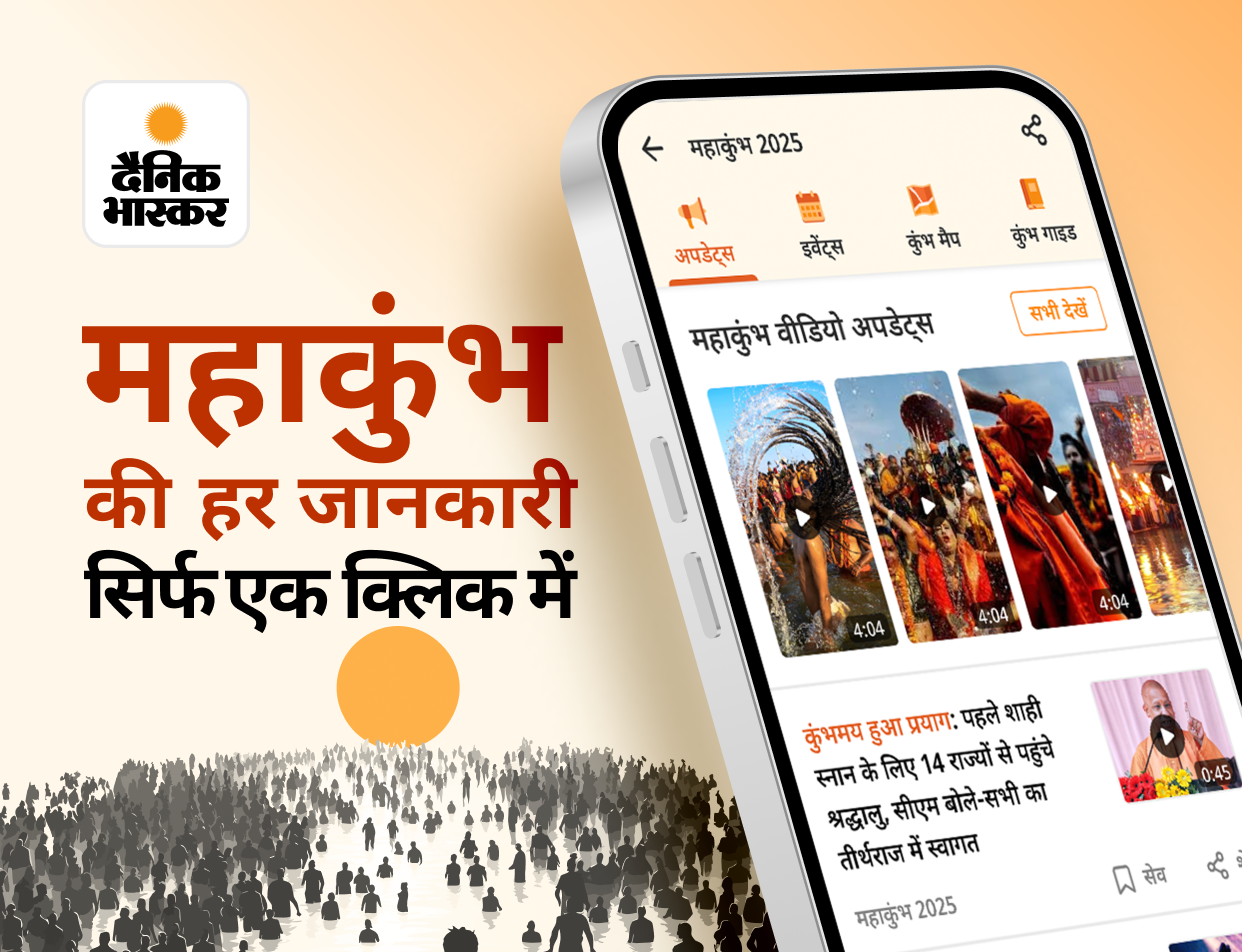- Hindi News
- Mahakumbh
- Prayag Kumbh Mela Interesting Facts; Rani Laxmibai Naga Sadhus | British Rule
15 hours agoAuthor: Dharmendra Chauhan/Indrabhushan Mishra
- copy link

year 1858, Kumbh took place in Prayag. At that time the revolution of 1857 was going on in the country. Revolutionaries were roaming around in the Kumbh in the guise of sages and saints. The British got scared. The government took over the lands around the confluence. Banned on train and bus tickets. People started being stopped from coming to Kumbh.
Professor Dhananjay Chopra of Allahabad University writes in his book ‘Kumbh in India’ – ‘Rani Lakshmibai was staying at a Pandey’s house in Prayag. The British came to know about this. Pandey was hanged.
Lakshmibai returned to Gwalior, but the British army continued to pursue her. Colonel Reilly was leading the British army. There was an encounter between the British and the queen. Meanwhile, a British soldier attacked Laxmibai with a sword on her forehead.
Novelist Vrindavan Lal Verma writes in his book ‘Lakshmi by the Rani of Jhansi’ – ‘The queen had a deep wound in the lower part of her chest. He tried to stop the flowing blood with his turban, but the wound was deep and the bleeding was not stopping. Still Rani went ahead and killed that British soldier. Meanwhile, another soldier fired a bullet at his chest. The queen fell on the horse’s back.

Rani Lakshmi Bai facing the attack of British soldiers.
Rani’s loyal soldiers Gul Mohammad and Raghunath Singh took them to the nearby Badi Shala of Sant Gangadas. Then the ashram was called shala. Gangadas and hundreds of Naga Sadhus lived there. Gangadas recognized the queen as soon as he saw her. Rani was his disciple. However, despite all efforts the queen could not be saved.
Here, the British army had arrived in the school premises. The footsteps and noise of horses could be heard. The British thought that the queen was injured and was kept hidden in the hut of the school. Gangadas ordered that the British be stopped, so that the queen could be cremated.
The Naga Sadhus present in the big school picked up swords and spears. At that time there were two thousand Naga Sadhus in the monastery. Everyone knew how to use weapons. He also knew how to use cannon.
The Naga Sadhus took out a two-foot cannon kept in the school to fight the British. He placed it on the window and filled it with gunpowder and killed many British. Akbar had given this cannon to Gangadas’s guru Parmanand Maharaj. The British were surprised to see that the monks who were garlanding were wielding swords, spears and cannons.
In the third episode of ‘Mahakumbh Ke Kisse’ series, the story is about the freedom movement and the Kumbh connection.

Scene of war between British army and Naga Sadhus.
To save Lakshmibai’s son, his head had to be shaved.
Mahant Ramsevak Das of Sant Gangadas Shala says – ‘The queen had handed over her son Damodar Rao to Gangadas at the last moment. To protect Damodar Rao, his identity was changed. His head was shaved and a Tulsi garland was placed around his neck. He was given the form of a Naga Sadhu.
The British had come to know that Gangadas had performed the last rites of Lakshmibai. He has also hidden Damodar Das. The British had gone after Gangadas.
Here Gangadas went to Kashi with the remaining sadhus. There the Naga Sadhus of all the Akharas met Gangadas. Gangadas told the sadhus – ‘If we do not go to Gwalior, our Dwaracharya Peeth will be destroyed.’
This Peeth was built by Mahant Paramdas of Ramanandi sect. This is one of the oldest Peethas of Vaishnav sect.
Mahant Ramsevak Das tells – ‘After a few days, when Gangadas returned to Badi Shala, he saw that the dead bodies of 745 sadhus were lying there. All these saints were killed fighting the British. The bodies of the sadhus were cremated on the banks of the Swarnarekha river.
Even today, every year tribute is paid to the Naga Sadhus in the Big Shala of Baba Gangadas. His weapons are worshipped.

Dead bodies of Naga sadhus and British soldiers were scattered in Sant Gangadas Shala.
The strategy of the revolution of 1857 was made in the Kumbh itself, lotus flowers and rotis were distributed.
In the year 1855, revolutionaries were busy preparing for a big movement. Meanwhile, Kumbh took place in Haridwar. Peshwa Bajirao II’s adopted son Dhundhu Pant, his brother Bala Saheb, revolutionaries Azimullah Khan, Tatya Tope and Babu Kunwar Singh also reached Haridwar. They climbed four kilometers steeply and reached the Chandi Devi temple on Neel Parvat. Maharishi Dayanand was already camping there.
Dayanand told the revolutionaries-

‘How can another country have control over one country? Tolerating this is a great sin.

Kumar Nirmalendu writes in the book ‘Prayagraj and Kumbh’ – ‘The foundation of the revolution of 1857 was laid in the Kumbh of 1855 itself. Intelligence committees were formed in big cities. Lotus flowers and rotis were distributed in military cantonments, cities and villages, so that the message of the revolutionaries could be delivered to every home. Sages and saints were running a campaign to connect more and more people with the movement through stories.

Revolutionaries distributing lotus flowers and rotis to convey the message of the freedom movement.
Prayag Pandas put burning picture of Union Jack on their flags
The rebellion that started from Meerut in 1857 soon reached Allahabad. On June 6, Maulvi Liaquat Ali liberated Allahabad and its surrounding areas, but in the meantime Colonel Neel reached there with the army. He caused huge damage to Allahabad. The camps of saints and sages were destroyed. Guns were fired in the Sangam area. Lands confiscated.
Historian Heramb Chaturvedi says- ‘The British did not allow the Kumbh of 1858 to be held. Only the tradition was followed, but the next year when Magh Mela was held in Prayag, everything had changed. The Pandas of Prayag had taken charge of the movement. Pandas set up camp just below the fort. Special symbols were installed on every camp. These symbols were associated with freedom.
On some flags the Union Jack was shown burning and on some flags the Union Jack was shown falling down. Revolutionaries were roaming around in Kumbh in the guise of sadhus. There was also a gathering of media. Because of this, revolutionaries could easily get information. The frightened British gave death sentence to many Pandas. Many Pandas were forced to flee Prayag.

To protest against the British government, Pandey used to put a burning picture of the Union Jack on his flags.
On 1 November 1858, a court was held in Allahabad. Viceroy Lord Canning read the Queen’s proclamation. It was written in it that the 250-year-long rule of the East India Company was coming to an end. Now the power of India will be directly in the hands of the Queen. Canning also said that the government would not interfere in the religious matters of Indians.
It is said that the British were alarmed by the role of revolutionaries in the Kumbh of 1858. That’s why they were insisting on not interfering in religious matters.
Pandas did not allow dam to be built on Ganga, British had to bow before Malaviya.
Dhananjay Chopra writes in his book ‘Kumbh in India’ – ‘Kumbh was held in Haridwar in 1915. During this time the British government was building a dam on the Ganges. The priests of Haridwar were opposing this dam for a long time.
That year Madan Mohan Malviya also reached Kumbh and joined the protest against the saints. He associated the kings and emperors of many princely states with the movement. Kings sent armies to stop the construction of the dam. The British were forced to bow down. The work of building the dam was stopped. It was in this Kumbh that Madan Mohan Malviya laid the foundation of All India Hindu Sabha.

Madan Mohan Malviya expressing opposition to building a dam on the Ganga in Haridwar.
Gandhi said- ‘I resolve to link the faith of Kumbh with the freedom movement’
In the year 1915, after returning from South Africa, Mahatma Gandhi met his political guru Gopal Krishna Gokhale. Gokhale advised him to go to Kumbh. Lakhs of devotees from all over the country have gathered there. There will be a chance to understand the larger public of the country. Gokhale advised Gandhi to meet Swami Shraddhananda in Haridwar. Shraddhanand was preparing an army of patriots in his Gurukul in Haridwar.
Gandhi stayed with Shraddhanand for two days. He spent seven days in the camp. Then about 17 lakh people had participated in Kumbh. Seeing such a crowd, Gandhi felt that the faith of this crowd should be linked to the freedom movement.
After this, Gandhi also participated in the Prayag Kumbh of 1918, escaping from the eyes of the British. According to government documents, the British intelligence report mentions Gandhi coming to Prayag, taking a dip in the Sangam and meeting people. Later Gandhi also admitted that he had participated in Prayag Kumbh.
On 10 February 1921 in Faizabad, Gandhi had said-

I was already supposed to come for the pilgrimage to Ayodhya, but could not come because of going to Prayag Kumbh.

Gandhi has mentioned this incident in ‘My Experiments with Truth’.

Mahatma Gandhi discussing the freedom movement in Prayag Kumbh, year 1918.
The British banned rail-bus tickets, said- ‘Japan is going to bomb Kumbh’
The year 1942, the Second World War was breaking out. India was forcibly thrown into the war by the British. More than 20 lakh Indian soldiers were fighting on behalf of Britain. Big leaders of India were angry with this. The British sensed this resentment. This year Kumbh was held in Prayag. The British government banned the sale of train and bus tickets just before the Kumbh.
Government said- ‘Japan can drop bombs in Kumbh. Lakhs of people will be killed. However, even after this, lakhs of devotees had reached that Kumbh.
Even before this, during the Kumbh of 1918, the British had banned the sale of railway and bus tickets. Even then the world war was going on. Experts say that the British were scared of the Kumbh crowd. He felt that this crowd could be instigated for agitation. If the revolutionaries succeed in doing this, the government will not be able to cope.
Sketch: Sandeep Pal
———————————————–
Stories of Mahakumbh-1: Portugal sent a priest to change Akbar’s religion: Jahangir gave 700 bighas of land to the Akhara; Aurangzeb used to drink Ganga water when he was ill.

Aurangzeb considered Ganga water as the water of heaven. Once he fell ill, he asked for Ganga water to drink. French historian Bernier has written in his travelogue – ‘Whenever Aurangzeb went anywhere, he kept Ganga water with him. He also used Ganga water in his morning breakfast. Read the full news…
Tales of Mahakumbh-2: People used to offer their first child to Ganga: The British used to charge tax on haircut of beard and hair; Ganga water was sent to London in a silver urn

Between 1827 and 1833, Fanny Parker, the wife of a British customs officer, came to Allahabad. He has written in his book ‘Wanderings of a Pilgrim in Search of the Pictures’ – ‘When I reached Allahabad, a fair was organized there. A crowd of Naga Sadhus and Vaishnav saints were going for bath. I met many married women who did not have children. They had pledged that if they had a first child, they would gift it to the Ganga. Read the full news…

Every update of Maha Kumbh, information about every event and complete map of Kumbh on just one click.
What is going on in the Mahakumbh of Prayagraj? What is special in which Akhara? Which ghat is built where? Which artists will perform in Kumbh this time? When will the sermons of which saint take place? You will get answers to all your questions related to Maha Kumbh on Dainik Bhaskar’s Kumbh Mini App. Here in the Updates section, you will get every news related to Kumbh. In the Events section, you will know which event will take place in Kumbh, when and where. In the Kumbh Map section, you will get direct navigation to every important location. Through the Kumbh Guide, you will know every important thing related to Kumbh.
Click here to view the Kumbh Mini App now Click





